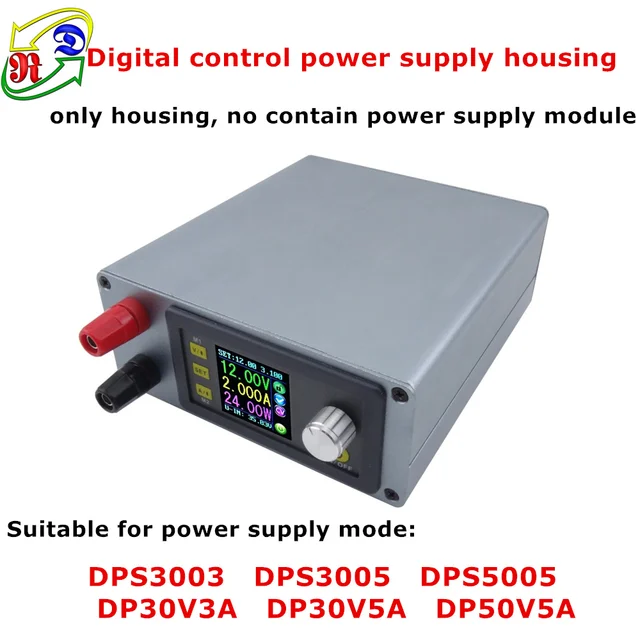Flintrock, I’m having problems finding it, do you mind linking me?
Edit: is it this one?

Yes, that is it, they have 2 versions, 1 for the small 5A and below power supplies and another for the larger 10A+ power supplies.
Meh, I spent $35 on the power supply, I’m going to have a hard time justifying $22 for the enclosure…
Well if you scavenge everything of course you can save $22. But most enclosures cost 9 or 10 plus shipping, and add a couple of bucks for the connections and switch, the couple of bucks left over then is getting you convenience (it all already fits, no cutting) and an enclosure of just the right size, if it's got everything you want. Also I think there's a discount available, just mention BLF as always. It won't be for everyone, but it's a pretty nice option. It's nice that they went with the full binding posts for connections.
Yeah, it’s a fair price probably. I’m just weird and like to splurge on some things and cheap out on others.
I agree, I would most likely have still built mine DIY even if this was out at the time. Things that don’t give me a tangible benefit are very hard for me to justify with my current balance of time vs money.
Now down the road things will most likely change some.
Is that case aluminium?
Anyone knows?
It appears to be aluminum.
Open source aftermarket firmware available.
It removes cc from the firmware.
Interesting, although I have to say I actually prefer the screen of the stock firmware better. The colors are nice and I like having the wattage.
If it removed CC then it is really almost pointless it would seem but still a good start for modding.
I would love to see the ability to have an “external voltage reference” added. Basically so you could connect another set of wires that would run to the end of the leads and be used strictly for voltage readings. Thus eliminating the voltage sag in the leads themselves at higher currents.
This is a rather large issue when dealing with 10A+ currents, even with 12AWG wires.
I just spotted this thread and read a few comments. I wanted to share what we all know but maybe forget - you can chain power supplies just like batteries. You can double your volts or double your amps with two small ones.
How would that work with these since the input is limited to 60v input due to the input caps?
Now you could run them in parallel current mode easy enough I suppose, at least the DPS series that doesn’t need a diode. The ones that need a diode would fry I imagine.
Whoa, be very careful doing that. Chaining batteries doesn't take Negative of each battery to ground. Thus, shorting the positive of the previous battery to ground. If you chain power supplies, you need to somehow float the ground of the succeeding power supplies' outputs to prevent shorts.
I generate 0-60v from two 30v power supplies all the time like this. You connect a POS and NEG to each other, and set them aside. (aka wired in series) Then you use the remaining two wires for your 60v
Each power supply still only has 30v across it.
neither does this. You set the connection aside.
You're power supplies must not have DC negative sharing the AC grounded to the source negative within them. If they did (I believe most do), you would be shorting positive of the first supply to the negative source of the second supply.
EDIT: Maybe it will work if the 2 units cases (if matelic) don't touch. I'm not sure. Too tired to think it through right now. I would just be very careful. I have always floated DC output on subsequent series connected power supplies for safety's sake. Of course, the floated power supply should not be used with out a grounded power supply before it (the first power supply).
EDIT2: I'm talking about A/C powered power supplies. It just occurred to me that you may be talking about front-end (I think that is the term) DC powered power supplies. I haven't ever looked into that. So I have no idea if what I said would apply to that situation.
If you connect the output of one of these to the input of the next, the second one will work just like the first, it will have the same max output voltage and current.
This is how I tested my second unit when I first got it, the voltage does NOT add up nor current wired in series.
Wired in parallel the current will be additive.
Connecting DC negative to AC Earth ?! That would be unthinkable!